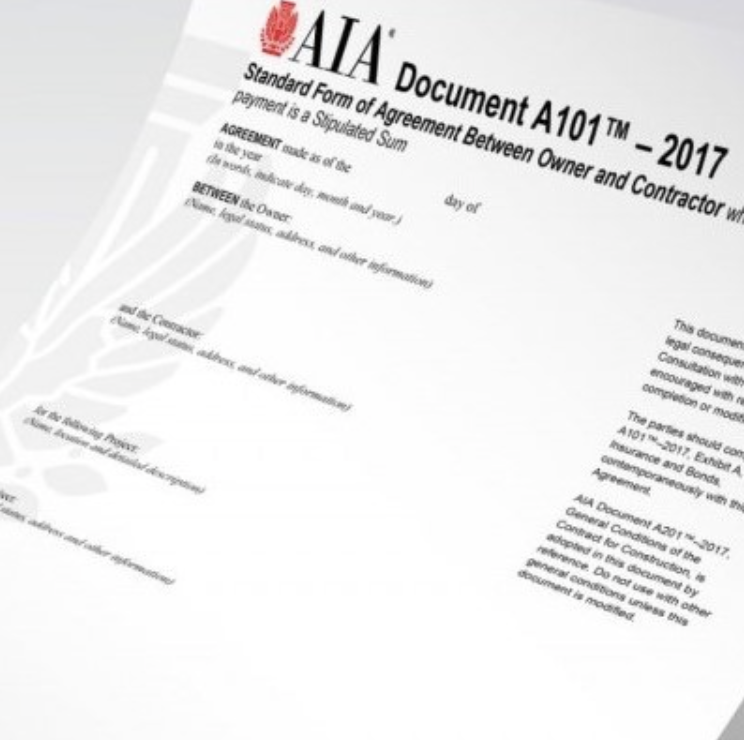By Christopher D. Ling | January 2, 2023

In the realm of architecture, the construction administration phase is a critical part of project management, ensuring that the design on paper becomes a tangible reality. It involves regular site visits, observations, and interactions with contractors to ensure that construction proceeds according to the contract documents and industry standards. A distinction can be made between typical construction administration and enhanced construction administration by the extent of an architect’s involvement and the specific responsibilities they assume during this phase.
Typical Construction Administration
In typical construction administration, architects adhere to the guidelines outlined in the American Institute of Architects (AIA) form contract, such as the AIA B201. This approach generally involves monthly site visits and limited responsibilities for reviewing completion progress and contractor payments. The architect’s role is primarily to certify the contractor’s entitlement to payment based on the percentage of work completed. Let’s delve deeper into the key aspects of typical construction administration:
Monthly Reviews and Observations: The architect reviews contractor payments, applications, submittals, shop drawings, and invoice percentages] based upon the schedule of values. These reviews occur once a month, and they aim to ensure that the work has progressed as indicated in the contract documents.
Payment Certification: The architect’s primary duty in this phase is to certify that the contractor is entitled to payment for the amount certified. This certification is based on their knowledge, information, and belief that the work aligns with the contract documents and that the proper percentage of construction has been reached.
No Inspections: Unlike building inspections, typical construction administration does not involve detailed inspections of the quality of work or building safety. The architect focuses on the completion percentage, rather than in-depth evaluations of construction quality.
Substandard or Unsafe Conditions Reporting: If the architect identifies substandard construction or unsafe conditions at the construction site during their monthly visits, they have an ethical obligation to report their findings.
Enhanced Construction Administration
Enhanced construction administration, on the other hand, goes beyond the standard scope of work defined in a typical AIA form contract like the B201. Enhanced Construction Administration may involve additional site visits, more on-site tasks, and increased contractor responsibilities for the architect. This can be initiated through form contract modifications which can be as little as changing the terms from “observation” to “inspection.” The architect may also be required to maintain comprehensive records and provide additional services beyond the default scope.
After the contract is agreed, pay attention to the pattern and practice of the job. Make sure the services promised are being performed, no more and no less. Let’s explore the key components of enhanced construction administration:
Frequent Site Visits: Enhanced construction administration often requires architects to visit the construction site more frequently than the typical monthly schedule. This increased presence aims to provide a more hands-on approach to project oversight. This is a great idea for all parties involved. As an architect, you are taking on more responsibility, and should be compensated accordingly.
Additional Responsibilities: Beyond observing and certifying payments, architects taking on enhanced construction administration may be tasked with more involved on-site tasks. These tasks may include addressing unforeseen issues immediately such as interacting with subcontractors or material suppliers, conducting in-depth quality inspections, or coordinating with various project stakeholders. Being on site more can breakdown the chain of command and skip the general contractor.
Record-Keeping: Enhanced administration often necessitates comprehensive record-keeping, including meeting minutes and documentation of on-site activities. These records serve as a detailed account of the project’s progress and can be used for various purposes, including legal documentation if a conflict arises.
Considerations for Architects
When architects are asked to engage in enhanced construction administration, there are several important considerations to keep in mind:
1. Insurance and Legal Counsel: Before agreeing to any enhanced services, architects should consult with their insurance carrier and potentially seek legal counsel to assess the associated risks, liabilities, and potential challenges.
2. Contract Modifications: Any changes to the standard contract, especially those requesting enhanced services, should be approached with caution and be thoroughly reviewed. Such adjustments should serve as red flags for architects to consider the implications carefully. Be sure that your compensation accurately reflects the revised scope and the risks involved.
3. Meeting Minutes: Meeting minutes can play a significant role in documenting on-site issues, project challenges, and note the architect’s involvement. Architects should be aware that lawyers may use these minutes to demonstrate how the parties are meeting their responsibilities.
In summary, the key difference between typical construction administration and enhanced construction administration lies in the level of an architect’s involvement and the scope of responsibilities they assume during the construction phase. Architects should approach requests for enhanced services with care, considering the impact on insurance, contractual terms, and increased responsibility.
Regardless of the approach taken, construction administration remains a critical phase in ensuring that architectural designs are executed to produce the intended project.
Christopher D. Ling, AIA, NCARB, PP, LEED AP, is a seasoned construction expert with over three decades of experience. As a Registered Architect and Professional Planner, he has authored reports for 1000+ construction cases, totaling $2 billion. Founder of ARCHforensic® LLC, Ling specializes in resolving litigation claims through meticulous investigation and expert testimony.








Wow, what a great article! The way you’ve laid out the complexities
of construction work is both clear and practical. It’s refreshing to see
such timely posts that truly helps experts in the field.
I’ll be linking to this on my construction blog because I know
my readers will find your information extremely useful.
Appreciate the great work!